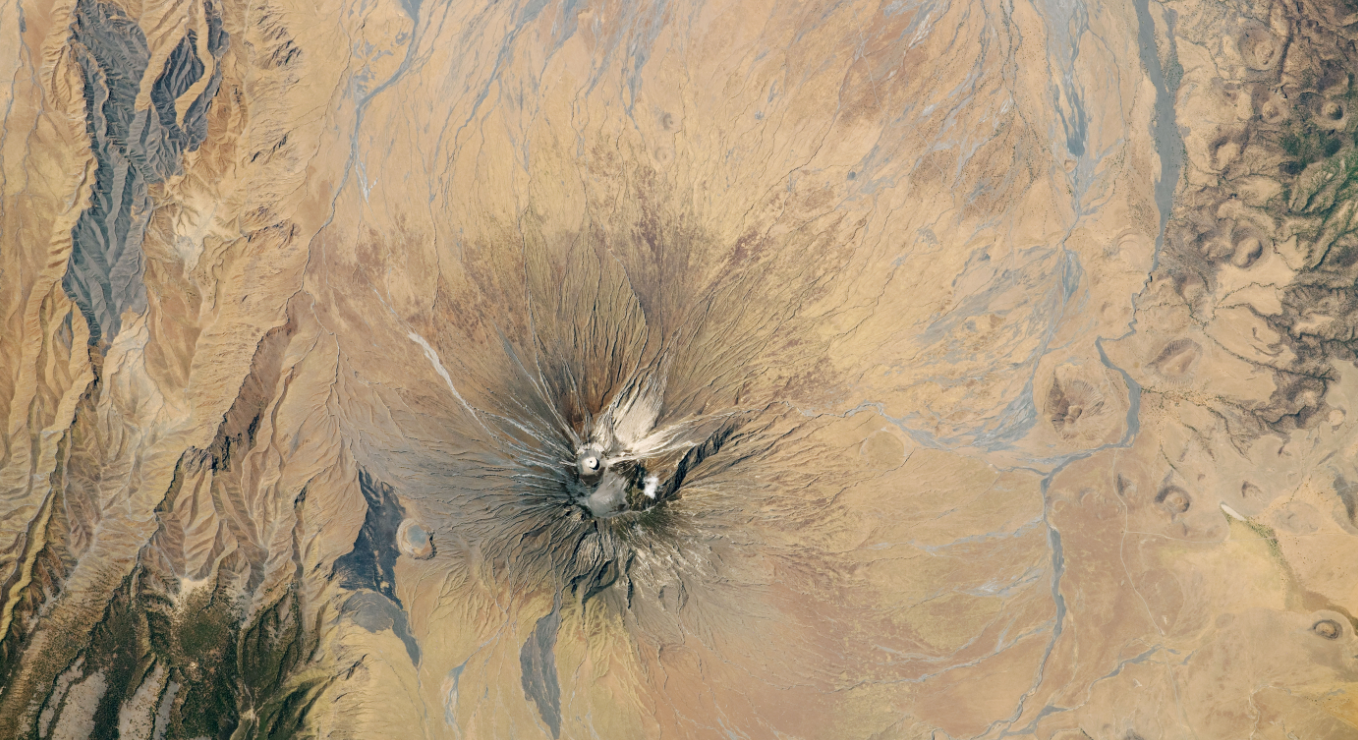Ol Doinyo Lengai is one of the weirdest volcanoes on planet Earth, perhaps even in the whole Solar System. While it appears typical enough from afar, take a peek into its northern crater and you’ll see it oozes with a unique form of black lava that’s relatively cool and flows like runny motor oil.
Located in the East African Rift of northern Tanzania, Ol Doinyo Lengai is the only active volcano known to gargle carbon-based lava, known as natrocarbonatite lava. There’s some evidence that volcanoes on Venus may have once erupted natrocarbonatite lava too, but this African giant is the only known producer on Earth (at least in relatively recent times).
Most volcanoes churn out lava rich in silicate minerals, making its melting point over 900°C (1,652 degrees Fahrenheit). The lava of Ol Doinyo Lengai contains relatively little silica, but has an abundance of carbonate minerals, allowing the lava to enter a liquid state at just 540°C (1,004 degrees Fahrenheit).
The lack of silica makes the lava extremely viscous. When an eruption occurs, it looks more like a spluttering pot of black motor oil than an oozing trail of red-hot lava.
Given the viscosity of its lava, scientists are pretty surprised the volcano can erupt so violently. Explosive eruptions often occur in other volcanoes because gas bubbles can become trapped within the gloopy lava. Nevertheless, it’s clear that Ol Doinyo Lengai can erupt with an intense flurry of liquidy lava, perhaps because it’s loaded with dissolved carbon dioxide and other gases, making it effervescent like a fizzy soda.
Standing at a lofty height of 2,962 meters (9,718 feet), the volcano is armed with two craters, but only its northern one erupts. The latest eruption period began in April 2017 and was still bubbling away as of the latest report in March 2024.
In 2009, volcanologists collected gas samples from Ol Doinyo Lengai to unearth the reason behind its unique carbon-based lavas. Curiously, they found that the makeup of gases was “indistinguishable” from those emitted along mid-ocean ridges despite the volcano being located inland, far from deep-sea mountain ranges.
This led the researchers to conclude that the unique carbon-rich lava was being created by the melting of minerals in the Earth’s upper mantle, the chunky layer of rock just beneath the planet’s crust.
“The chemistry and isotopic composition of the gases reveal that the CO2 is directly sourced from the upper mantle below the East African Rift,” David Hilton, professor of geochemistry at Scripps Institution of Oceanography at UC San Diego and coauthor of the 2009 paper, said in a statement.
“These mantle gases allow us to infer the carbon content of the upper mantle that is producing the carbonatites to be around 300 parts per million, a concentration that is virtually identical to that measured below mid-ocean ridges,” added Hilton.

A bird’s-eye view of Ol Doinyo Lengai taken by an astronaut onboard the International Space Station on October 6, 2020.
Image credit: ISS/NASA
The East African Rift system upon which Ol Doinyo Lengai sits has been tectonically active for around 25 million years and remains one of the most interesting geologic hot spots in the world.
Carving down the eastern side of Africa, it’s effectively a giant tear within the African Plate that’s drifting apart by a few millimeters per year. In millions upon millions of years, it could eventually split the African continent in half, creating a new ocean between East Africa and the remaining African Plate.
This divergent plate boundary is responsible for many of the towering peaks in the region, including Mount Kilimanjaro, Mount Kenya, and – last but not least – Ol Doinyo Lengai.
Source Link: Ol Doinyo Lengai Is The Weirdest Volcano On Earth, Maybe In The Solar System